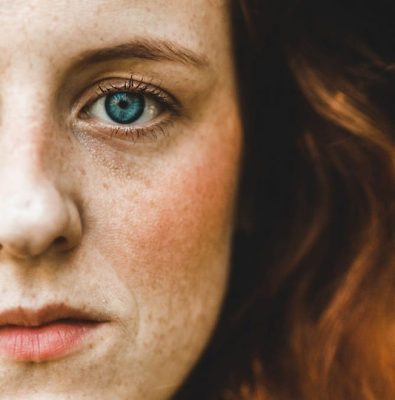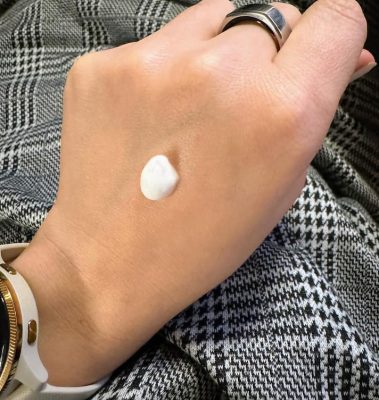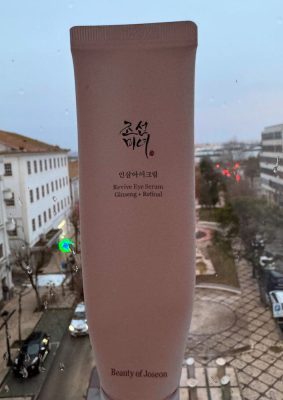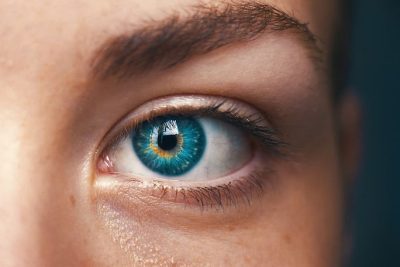Greetings, skincare enthusiasts!
Let’s unravel the mysteries of retinoids and explore valuable tips, tricks, and everything you need to know to incorporate it into your skincare routine.

Why to Use Retinol (or other retinoids)?
Here are general retinoid benefits for the face:
- Stimulates Collagen Production: Retinoids encourage the production of collagen, which helps reduce the appearance of fine lines and wrinkles, promoting smoother and more youthful-looking skin. But this is not the only collagen-boosting way, learn here how to increase collagen in face.
- Promotes Cell Turnover: Retinoids enhance the rate at which skin cells turnover, aiding in the shedding old, damaged cells and revealing fresh, new skin. This contributes to improved skin texture, tone, and a radiant complexion.
- Addresses Hyperpigmentation: Retinoids can lighten dark spots, sun spots, and hyperpigmentation by inhibiting the production of melanin, the pigment responsible for skin color. This results in a more even skin tone.
- Unclogs Pores: Retinoids help prevent the formation of acne lesions by reducing the accumulation of dead skin cells and promoting the unclogging of pores. This makes them effective in treating and preventing acne and reducing the size of enlarged pores.
- Treats and Prevents Acne: Retinoids are effective in treating and preventing acne by preventing the formation of comedones (blackheads and whiteheads).
- Anti-Aging Properties: The combination of collagen stimulation, cell turnover promotion, and improved skin texture contributes to the overall anti-aging properties of retinoids, making them a valuable component in anti-aging skincare routines.
Choosing the Right Retinoid for Your Skin
If you’re new to the retinol game, the key is to start slow and steady. Avoid the common mistake of going in too strong or too often from the very beginning. As a seasoned skincare enthusiast, I recommend starting with an over-the-counter retinoid. They are generally less aggressive and allow your skin to acclimate (if you don’t have any special skin conditions that require a retinol prescription). Besides, start with lower concentrations.
There are several types of retinoids:
- Retinol: Retinol is a widely used over-the-counter retinoid. It is converted into retinoic acid in the skin, promoting collagen production, reducing fine lines and wrinkles, and enhancing skin texture. Retinol is milder than prescription retinoids, making it more suitable for beginners.
- Retinyl Palmitate: Considered a gentler form of retinoid, retinyl palmitate is often found in skincare products. It must undergo multiple skin conversions before becoming active retinoic acid. While it’s less potent than other retinoids, it can still offer benefits like improving skin texture and promoting cell turnover.
- Retinaldehyde (retinal): This intermediate form of retinoid is closer to retinoic acid in terms of potency. Retinaldehyde requires only one conversion in the skin to become active. It is more effective than retinol but tends to be better tolerated than prescription-strength retinoids.
- Adapalene: Adapalene is a synthetic retinoid commonly used to treat acne. It works by preventing the formation of acne lesions, reducing inflammation, and promoting skin cell turnover. It is available both over-the-counter and in prescription-strength formulations.
- Tretinoin (Retinoic Acid): Tretinoin is a prescription-strength retinoid that directly binds to retinoid receptors in the skin. It is highly effective in promoting collagen production, reducing fine lines, and treating acne. Tretinoin may cause more significant irritation compared to over-the-counter options, and a healthcare professional should guide its use.
- Tazarotene: Tazarotene is a prescription retinoid that is more potent than retinol. It is used to treat acne, psoriasis, and certain skin conditions. Tazarotene promotes skin cell turnover and has anti-inflammatory effects. It may cause more irritation than milder retinoids, and its use should be monitored by a healthcare professional.
How to use retinol?
How Much Retinol to Use?
Now, let’s address the most common question: How much retinol should you use? A pea-sized amount is sufficient for your entire face. Don’t overdo it; less is indeed more when it comes to retinol.

As demonstrated with a trusted over-the-counter product, a gentle and controlled application ensures you receive the full benefits without overwhelming and over-drying your skin.
And remember, retinols are not spot treatments. Apply them evenly to your face for comprehensive results – evening out pigmentation, supporting collagen production, and smoothing fine lines.
Consistency Over Intensity: A Golden Rule
In the world of skincare, consistency is the key. Don’t be tempted by the idea of intensifying your routine overnight. Opt for a less aggressive form of retinol and use it consistently over weeks, months, and even years. This approach trumps the sporadic use of a more potent product.
Remember, a gradual and consistent routine is your skin’s best friend, helping it stay nourished, firm, and rejuvenated without unnecessary inflammation.
The first results can be seen in about two months – it is ok not to see the benefits for some time.
Retinol Sandwich Method
The Retinol Sandwich Method is a skincare technique that involves layering retinol between moisturizing products to minimize irritation while maximizing efficacy.
Here’s how it typically works:
- Cleanse: Start with a gentle cleanser to remove any dirt, oil, and impurities from the skin.
- Moisturize: Apply a hydrating moisturizer or serum to your skin. This step helps create a protective barrier and hydrates the skin, reducing the risk of irritation from the retinol.
- Wait for ±15 minutes. Let the cream dry completely.
- Apply Retinol: Next, apply a pea-sized amount of retinol to your skin. This can be cream or serum—it doesn’t really matter.
- Wait for ±15 minutes. Let the retinoid solution dry completely.
- Moisturize Again: After allowing the retinol to absorb into the skin for a few minutes, follow up with another layer of moisturizer. This helps lock in the retinol and provides additional hydration to the skin, further reducing the likelihood of irritation.
By sandwiching the retinol between layers of moisturizer, you create a buffer that helps mitigate potential irritation while still reaping the benefits of the retinol. This retinol sandwich method can be especially beneficial for those with sensitive or dry skin who may experience irritation when using retinol alone.
And don’t bother about absorbing retinoids – there have been several types of research that showed that applying retinol on top of moisturizer doesn’t hinder the positive effect of retinol. However, it lessens the negative ones – irritation and dryness. Just don’t be in a hurry and wait till the moisturizer absorbs and dries completely, as applying retinol on wet/damp skin might be more irritating than applying it on dry skin.
When and How Often to Use Retinol
Use your retinoid in the PM skincare routine.
Most retinols are sensitive to sunlight, and using them during the day may diminish their efficacy. Besides, retinol can sensitize your skin, so going after that under UV rays is not healthy either.
Start with 2-3 times a week and gradually increase as your skin builds tolerance. Then, you can use it every other night or even every day except exfoliation day(s).
Consistency is key, and finding your sweet spot may take time.
Retinol for Sensitive Skin
Don’t be afraid if you have sensitive skin. Modify your retinol routine to suit your needs. Choose the less irritating retinoid with low concentration. For example, you can use a retinal eye cream and start with it – it has retinal – which is a mild form, and it is suitable for the sensitive skin around the eyes. Applying retinol on dry skin, avoiding exfoliation on retinol nights, and moisturizing before retinol application act as buffers, ensuring a gentler experience.
Best retinol for sensitive skin – a low percentage retinal solution (yes, not necessarily retinol – remember, retinal is more potent yet less irritating? An example of retinol for sensitive skin for beginners is Beauty of Joseon Revive Eye Serum – it is suitable even for around-eyes skin).

Where to buy it? YesStyle – use this Rewards Code FRUBY111 or follow the link https://ystyle.co/7tKQ
If the skin is very sensitive to retinoids – you might try applying a calming cream on top – there’s a moisturizer with skin soothing and repairing abilities – find more in Klairs Midnight Blue Calming Cream Review.
How to use retinol and niacinamide together?
For sensitive skin, you can use niacinamide before retinol application. For beginners, this can be a niacinamide moisturizer – to add more buffering effect. Then, when the skin dries completely – apply a pea-sized amount of retinol to your face. Then, when the skin dries completely again, followed by a moisturizer again.
Avoid slugging after applying retinol (applying thick vaseline-based ointments), as slugging might increase irritation. However, you could use Vaseline around your eyes before retinoid application to avoid irritation there.
Why to use niacinamide before retinol? Read more on niacinamide in skincare.
When using a retinoid, you can follow a skin cycling routine to prevent unwanted side effects.
Areas to Avoid: A Delicate Approach
Certain areas of your face require extra caution when using retinol. Steer clear of applying it directly around your mouth and chin, which can lead to excessive peeling. Be cautious around the eyes – consider specialized eye creams formulated for this delicate area.

The neck and chest, too, can be sensitive. Choose milder retinoids and moisturize before application to minimize the risk of irritation.
When should retinol (and other retinoids) not be used?
While retinoids offer various skincare benefits, there are situations and conditions where their use may not be advisable. Here are instances when you should exercise caution or avoid using retinoids:
- Pregnancy and Breastfeeding: The safety of retinoid use during pregnancy and breastfeeding is not well-established. High doses of vitamin A derivatives, such as isotretinoin, have been associated with birth defects. It’s advisable to avoid retinoids and consult with a healthcare professional.
- Skin Sensitivity and Irritation: Individuals with extremely sensitive skin may experience excessive dryness, redness, and irritation when using retinoids. In such cases, starting with lower concentrations and monitoring skin reactions is crucial. If irritation persists, discontinue use or consult a dermatologist.
- Open Wounds or Broken Skin: Applying retinoids to open wounds, cuts, or broken skin can exacerbate irritation and hinder the natural healing process. Wait until the skin has fully healed before incorporating retinoids. Why to avoid the use of topical retinoids during microneedling? It is also considered broken skin – wait till it heals. The same applies to sunburned or windburned skin, skin after exfoliation – both chemical and physical.
- Skin Conditions or Disorders: Some skin conditions, such as eczema, rosacea, or dermatitis, can be aggravated by retinoids. Individuals with these conditions should consult a dermatologist before using retinoids, as they may need to choose milder formulations or alternative treatments and consult a healthcare specialist.
- Use of Certain Medications: Some medications, such as certain antibiotics and topical products containing benzoyl peroxide or salicylic acid, may interact with retinoids and increase the risk of irritation. Consult with a healthcare professional if using multiple skincare products or medications.
- Allergic Reactions: Individuals with known allergies to retinoids or related compounds should avoid using products containing these ingredients. Always check product labels for potential allergens.
- Young Children: Retinoids are generally not recommended for use in young children. Children’s skin is more sensitive, and the long-term effects of retinoid use in this age group are not well-studied.
- Inability to Comply with Sunscreen Use: Retinoids can increase skin sensitivity to the sun, making it crucial to use sunscreen consistently. If an individual is unable or unwilling to comply with strict sun protection measures, retinoid use may not be suitable.
In case of any irritations or if you’re unsure how ho use retinoid, how to start or if skin doesn’t react well – consult a healthcare specialist.
Remember, skincare is a journey, and the key is to embrace consistency, gradual progress, and self-love.
Always consult with a skincare professional if you’re unsure about introducing retinol into your routine.
Stay radiant and confident, and have a fabulous skincare journey! And don’t forget to use sunscreen 🙂